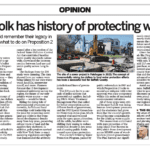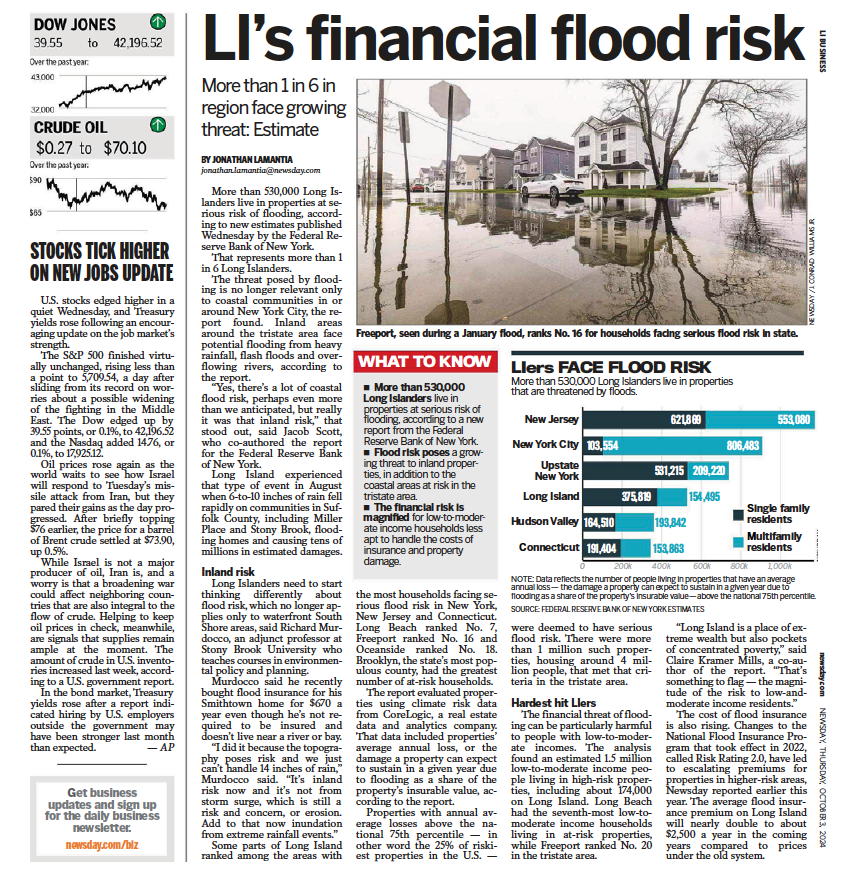The following post was published to the NYMuniBlog on October 17th, 2011. You can read the post here: http://nymuniblog.com/?p=1615
Local government, in this age of voter anger over the issues of partisan gridlock and increasing costs, must look to the past. Only then will Long Island be able to move towards the future.
In the search for solutions to the land use issues of blighted parcels, protection of open space and alleviation of developmental pressures, groups claim to have an innovative “cure” for what ails suburbia. Often, the “cure” involves local municipalities are in a cycle of producing constant reinventions of the wheel. Time and time again, there are press releases issued by government and “smart growth” groups that read as follows:
We need Transit-Oriented-Development (TODs)! Concentrate growth around the downtowns and train stations! We need Transfer of Development Rights (TDRs)! We should to cluster development, and transfer the density from parcels saved to the downtowns! A visioning is required to make this happen!
All of the ideas are correct, and the planning behind these various concepts is sound. These “new” and “innovative” solutions have been around since the first Comprehensive Regional Plan for Nassau and Suffolk Counties in 1970, and in various iterations since then.
The basis for the plan was the notion of “Corridors, Clusters and Centers”, which created corridors of growth (arterial roads such as NYS Route 110 in Huntington) that will connect Clustered developments (projects that have a 30% developed space and 70% preserved open space) centered in Centers (downtown areas that are within walking distance (the planning standard for walkability is one quarter-mile) to mass transit and other community services).
Currently, Suffolk County is grappling with how to protect the rapid decline in quality of its water supply. Solutions are being debated from various government agencies, stakeholders and organizations. Much of the work quantifying this problem and postulating these “new” solutions has already been done as far back as 1978.
In the efforts to protect Long Island’s sole-source aquifer, the Long Island Regional Planning Board (LIRPB) crafted in 1978 the Long Island Comprehensive Waste Treatment Management Plan, which was prepared pursuant to Section 208, the Federal Water Pollution Control Act. To this day, the groundbreaking study is referred to by the title of “the 208 Study”. The 208 Study divided Long Island into eight (8) different Hydrogeologic zones, and recommended specific residential densities for zones that have critical areas of deep recharge. In 1992, the LIRPB released the Special Groundwater Protection Area Study that highlighted areas critical to aquifer recharge, and established development guidelines and recommendations for these areas to not only let Long Island grow, but to protect the environment as well. These plans must be studied by policymakers, understood by the public, and given legal teeth so they can be implemented.
The science-based solutions to Long Island’s woes were outlined in multiple studies across decades, yet municipal governments across Long Island spend valuable time and taxpayer money searching for answers to questions that have been in place for decades. Time and time again, corridor studies are drafted, visioning processes commence, and after much fanfare, the solutions reached mirror those found in documents from years back. The redundancy is nonsensical, time consuming and wasteful. The planning process requires that an inventory be taken of existing conditions, and that includes past land use plans.
Recently, at the annual Suffolk County Planning Federation conference, it was stated by John Flynn, a member of the Suffolk County Planning Commission, that the 1978 Newsday series “Long Island at the Crossroads” could have the current year pasted on it and nobody would be able to tell the difference. He was correct. Time should be spent on understanding and quantifying the scale of a problem, not on identifying “new” problems that already well documented. Many of Long Island’s municipal problems are well documented, but their potential solutions have gotten lost in the ether due to exceptionally short-term memories across government.
The lack of institutional memory in planning on Long Island has to be addressed. It must be understood that in order to properly plan where we are going, we have to understand and remember where we have been. Once this is accomplished, government can build their solutions off of the strong body of work that was previously done.
Newly elected government officials should take a visit to the Arthur Kunz Library in the H. Lee Dennison building in Hauppauge, and pour over the Planning Department’s archives. The solutions to many of Long Island woes lay within those dusty, often ignored documents that sit on the shelves.











Rich,
In general, your post is thoughtful but respectfully allow me to clarify an important issue. As an architect, I understand that elements such as columns, walls, space, light etc are manipulated by architects of every civilization to reflect what the Germans call the Zeitgeist or “the spirit of the times.” Same elements but different meanings! As the principal planner for Brookhaven, I use past planning theory and topologies such as streets, neighborhoods, corridors, etc which I believe reflect our current post suburban circumstances. I reinvent, if you will, those elements that effectuate sound planning in each of the individual projects which I redesign. Whether its our 70-30 PCD Code, Ronk HUD form based zoning, Carmans River TDR, the Meadows, etc, the planning tool is reshaped, reconfigured and applied with all new meanings. That is the creative act based upon a thoughtful approach to good sound planning. Everything else is an imitation. I like to think that in Brookhaven that we actual attempt in our projects to create a new post suburban balanced model for both growth and preservation. I lose patience at conferences because we hear far too much talk, demagoguery or posturing but very little action result. Not only do actions speak louder than words, they can also change the way we live for the better.
TULLIO BERTOLI